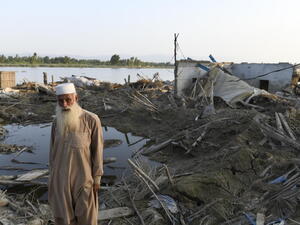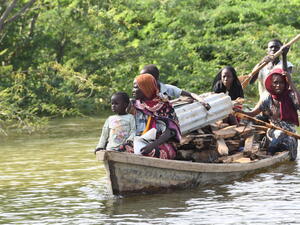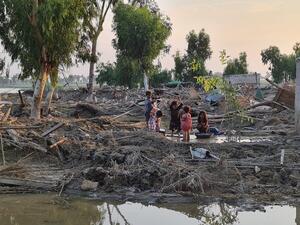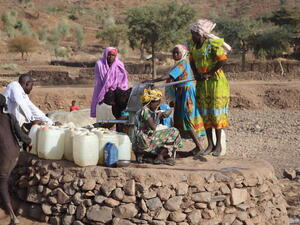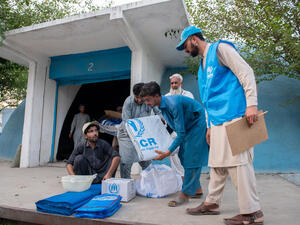US Air Force airdrops UNHCR relief supplies to refugees in north-east Kenya
US Air Force airdrops UNHCR relief supplies to refugees in north-east Kenya
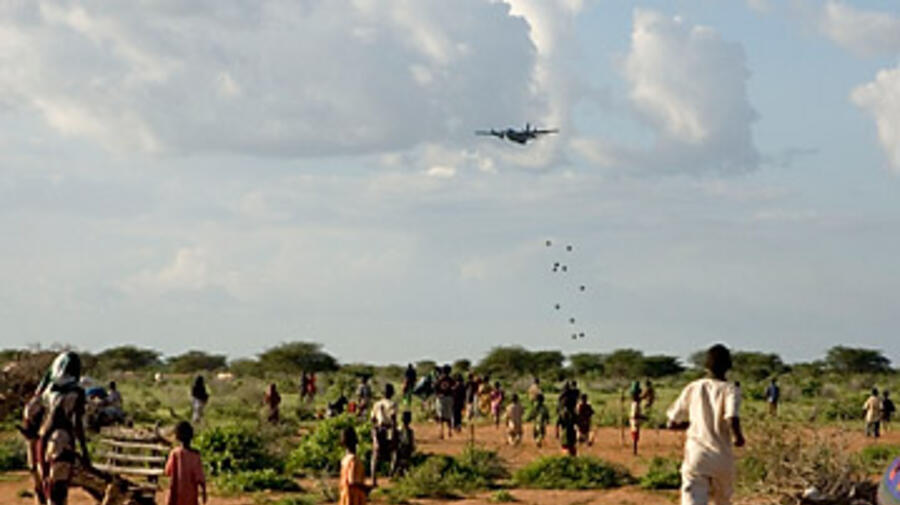
A US Air Force C-130 disgorges its cargo of UNHCR aid as it flies low over Dadaab in north-east Kenya.
DADAAB, Kenya, December 11 (2006) - The United States Air Force has begun airdropping tonnes of urgently needed UNHCR relief supplies for thousands of refugees affected by flooding in north-east Kenya.
"We've just had the fifth airdrop this morning," Geoff Wordley, UNHCR senior emergency officer, said here on Monday, adding that another US C-130 flight was expected later in the day. There were two airdrops on Saturday and two on Sunday at Dadaab, whose three camps house some 160,000 refugees.
"We've been receiving plastic sheets, mosquito nets and [lightweight] tents," Wordley said. A total 19,221 mosquito nets, 6,903 plastic sheets and 157 lightweight tents were delivered in the first five drops.
The Djibouti-based US transport aircraft will continue to move supplies from Nairobi to Dadaab until Thursday. Wordley said UNHCR hoped to transport 300 tonnes of emergency supplies to Dadaab, including some 200 tonnes by the airdrop.
UNHCR began a general distribution of plastic sheets on Sunday in the badly affected Ifo camp, where the floods displaced some 14,000 of the 53,000 refugees. More than 2,000 sheets, which will be used for building shelters, were handed out.
Wordley said the mosquito nets were needed because there was "an increased problem with malaria in the camps." The lightweight tents were being stockpiled in anticipation of a rise in the number of Somalis fleeing conflict in their troubled country after the rains are over. Most of the refugees here are from Somalia.
Meanwhile, UNHCR will also continue to airlift supplies to Dadaab using smaller aircraft. The airdrop was necessary because the Dadaab airstrip cannot take the weight of the much heavier C-130.
Enough fuel for a week was expected to be flown in to Dadaab on Monday, Wordley said. Fuel has been one of the most urgent needs because it is needed to pump water from boreholes in the camps.

UNHCR staff and volunteers load supplies from the airdrop onto a truck at Dadaab.
The refugee agency has been facing serious difficulties in transporting supplies from Nairobi to Dadaab due to poor road conditions and high water levels.
"Airdropping and airlifting requires enormous logistical and security coordination, let alone the high costs involved in embarking on this activity," said Nemia Temporal, head of UNHCR's Dadaab sub-office. "We have to do the airdrop as a last resort in order to save lives and we are grateful to the donors and the US government who made this possible," she added.
Wordley said more than 100 people were needed for each airdrop - some 60 police to clear the drop zone of people and livestock, and about 40 refugee workers to collect and load the supplies for transport to the camps. The plane comes in low and disgorges pallets carrying the supplies onto the damp ground, which cushions the fall.

